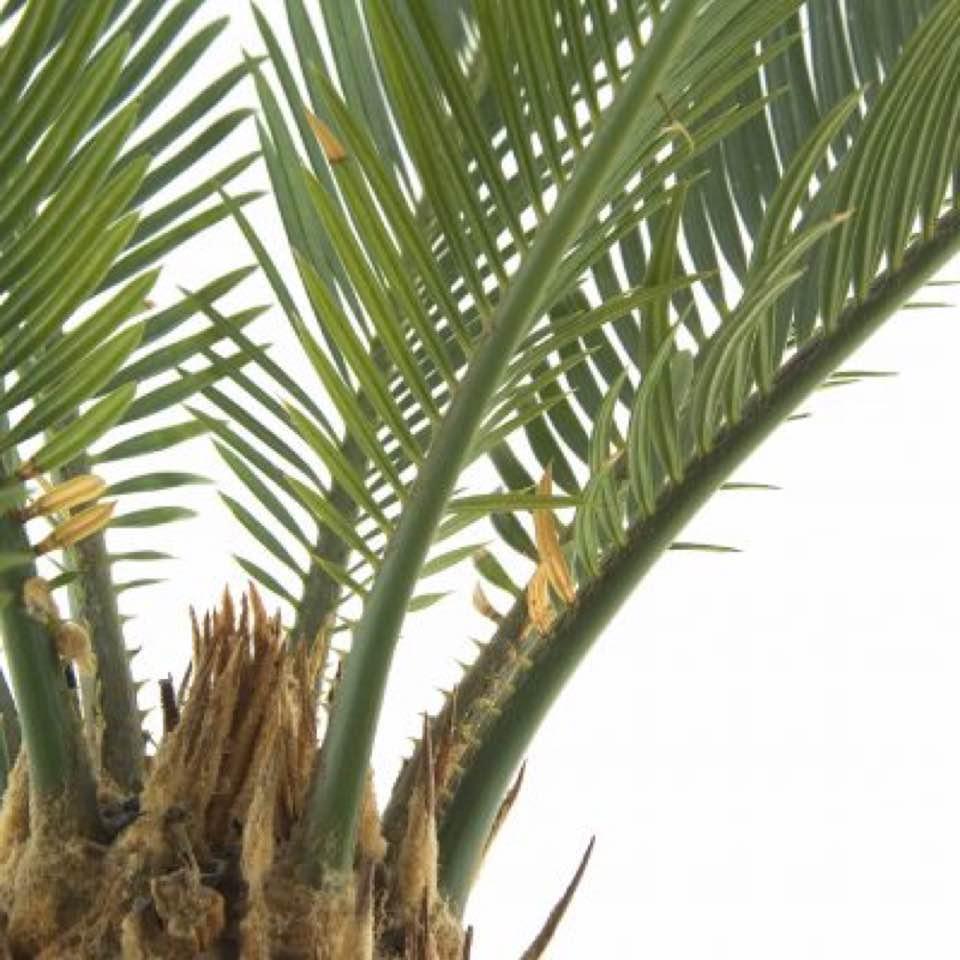Plant Experience
Detail
General Sago Palm Care
While cycads generally prefer very bright light, they will tolerate low light. They prefer staying on the dry side as excessive watering leads to root rot. Indoors or out, the sago palm tree prefers a light, well-drained soil with ample sun.
With minimal care, these rugged plants can last a lifetime and then some. Slow-growing and long-lived your plant may not bloom (produce a cone) in the first 15 years of its life or even ever at all.
Cycas revoluta periodically produces a lovely new flush of leaves called “break” which compensates for its slow-growing habit.
These tender new leaves emerge all at once in a crowning or circular pattern or feather-like rosette. Several weeks later, the leaves become harder, and stiffer. When plant’s reach the reproductive stage, the semi-glossy green leaves have strongly recurved edges.
Turn the plant a quarter turn every couple of weeks throughout the year except for in the spring. In the springtime when new leaves begin to grow, simply let the plant sit.
Check the soil moisture in the pot once a week by poking your finger into the top two or three inches. If the soil is dry, water the plant thoroughly. If it is still moist wait a few days and check again.
Empty the drip tray under your plant after you finish watering. Don’t allow it to stand in water because this will cause root rot.
Fertilize your plant when watering using an 18-6-18 water-soluble fertilizer. Mix one teaspoon of fertilizer into a gallon of water for proper dilution during the growing season. Start in the springtime when you see new growth. Stop fertilizing in mid fall, and do not fertilize throughout the winter.
Check plants once a month and trim a sago palm any yellowing or dead leaves and dust the fronds with a soft cloth. When you prune dead growth, be sure to prune it close to the trunk. Use a sharp, clean set of pruning shears.
In the springtime when new growth appears, check to see if the plant is root bound. If the plant and roots seem crowded in its current container, you will want to consider transplanting your sago palm. Select a pot two inches larger than the pot your plant currently grows in. It goes without saying that it must have good drainage holes in the bottom.
Side Shoots Sago Bulbs or Pups
Old mature plants sometimes develop bulbs or side shoots on the stem. These bulbs can be cut off and rooted. Remove leaves from the side shoots as they pull lots of moisture.
Stick the “bulbs” in soil (I like pure sand) keeping the mixture on the dry side until new roots form over a few months.
While cycads generally prefer very bright light, they will tolerate low light. They prefer staying on the dry side as excessive watering leads to root rot. Indoors or out, the sago palm tree prefers a light, well-drained soil with ample sun.
With minimal care, these rugged plants can last a lifetime and then some. Slow-growing and long-lived your plant may not bloom (produce a cone) in the first 15 years of its life or even ever at all.
Cycas revoluta periodically produces a lovely new flush of leaves called “break” which compensates for its slow-growing habit.
These tender new leaves emerge all at once in a crowning or circular pattern or feather-like rosette. Several weeks later, the leaves become harder, and stiffer. When plant’s reach the reproductive stage, the semi-glossy green leaves have strongly recurved edges.
Turn the plant a quarter turn every couple of weeks throughout the year except for in the spring. In the springtime when new leaves begin to grow, simply let the plant sit.
Check the soil moisture in the pot once a week by poking your finger into the top two or three inches. If the soil is dry, water the plant thoroughly. If it is still moist wait a few days and check again.
Empty the drip tray under your plant after you finish watering. Don’t allow it to stand in water because this will cause root rot.
Fertilize your plant when watering using an 18-6-18 water-soluble fertilizer. Mix one teaspoon of fertilizer into a gallon of water for proper dilution during the growing season. Start in the springtime when you see new growth. Stop fertilizing in mid fall, and do not fertilize throughout the winter.
Check plants once a month and trim a sago palm any yellowing or dead leaves and dust the fronds with a soft cloth. When you prune dead growth, be sure to prune it close to the trunk. Use a sharp, clean set of pruning shears.
In the springtime when new growth appears, check to see if the plant is root bound. If the plant and roots seem crowded in its current container, you will want to consider transplanting your sago palm. Select a pot two inches larger than the pot your plant currently grows in. It goes without saying that it must have good drainage holes in the bottom.
Side Shoots Sago Bulbs or Pups
Old mature plants sometimes develop bulbs or side shoots on the stem. These bulbs can be cut off and rooted. Remove leaves from the side shoots as they pull lots of moisture.
Stick the “bulbs” in soil (I like pure sand) keeping the mixture on the dry side until new roots form over a few months.
Album (13)
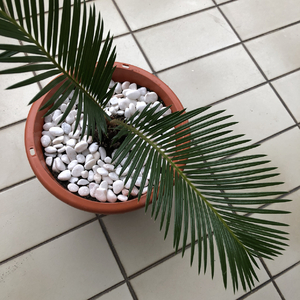
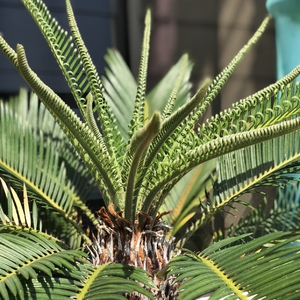
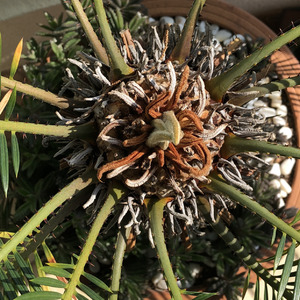

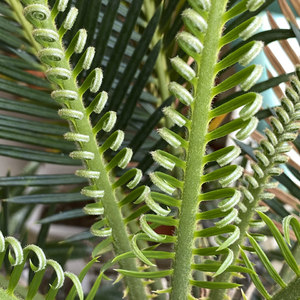
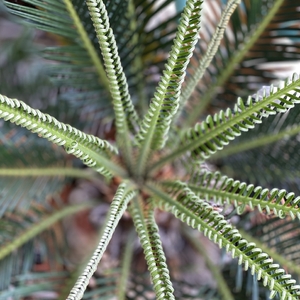
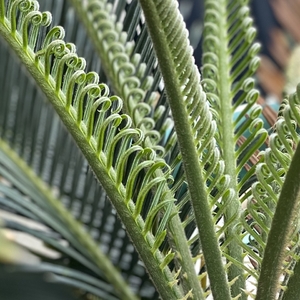
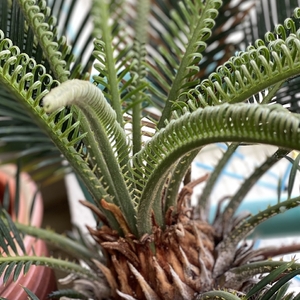
kensong
2020-02-23

After such a long time, new fronds.








kensong
2018-04-16

This is my first growing diary.
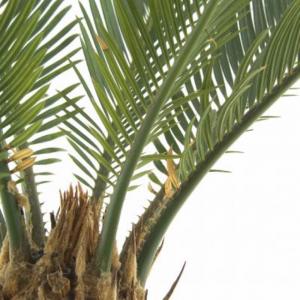

kensong
2018-04-14

Repotted a Sago plantlet.


kensong
2018-03-29

Sago leaves growing.


kensong
2018-03-22

New leafs sprouting.




Elite Article


